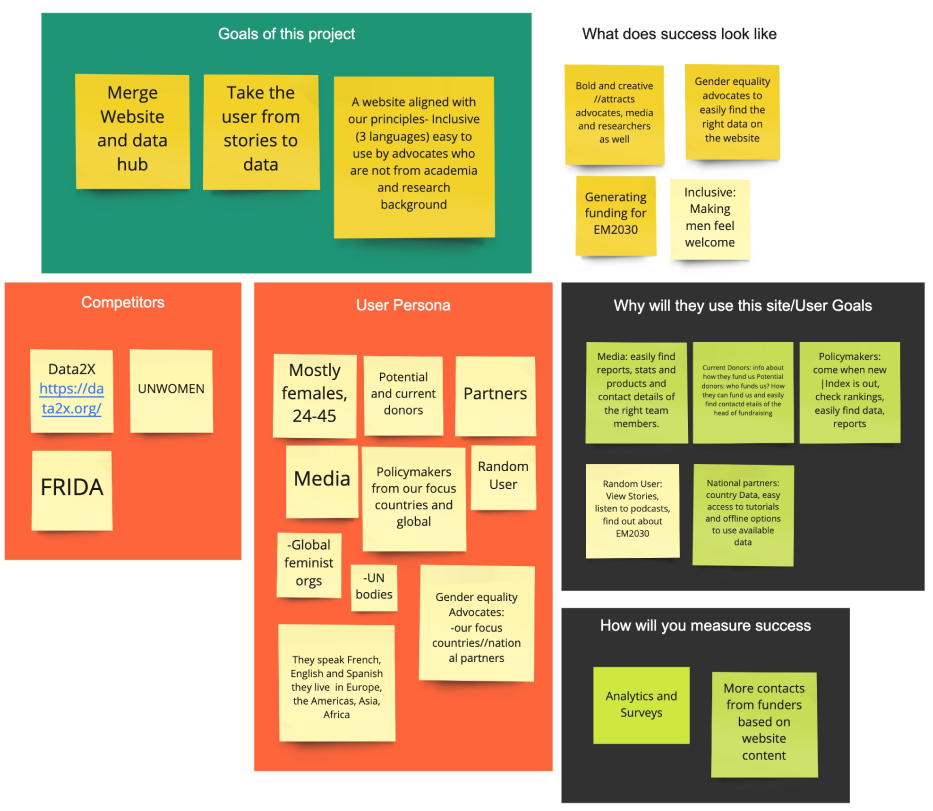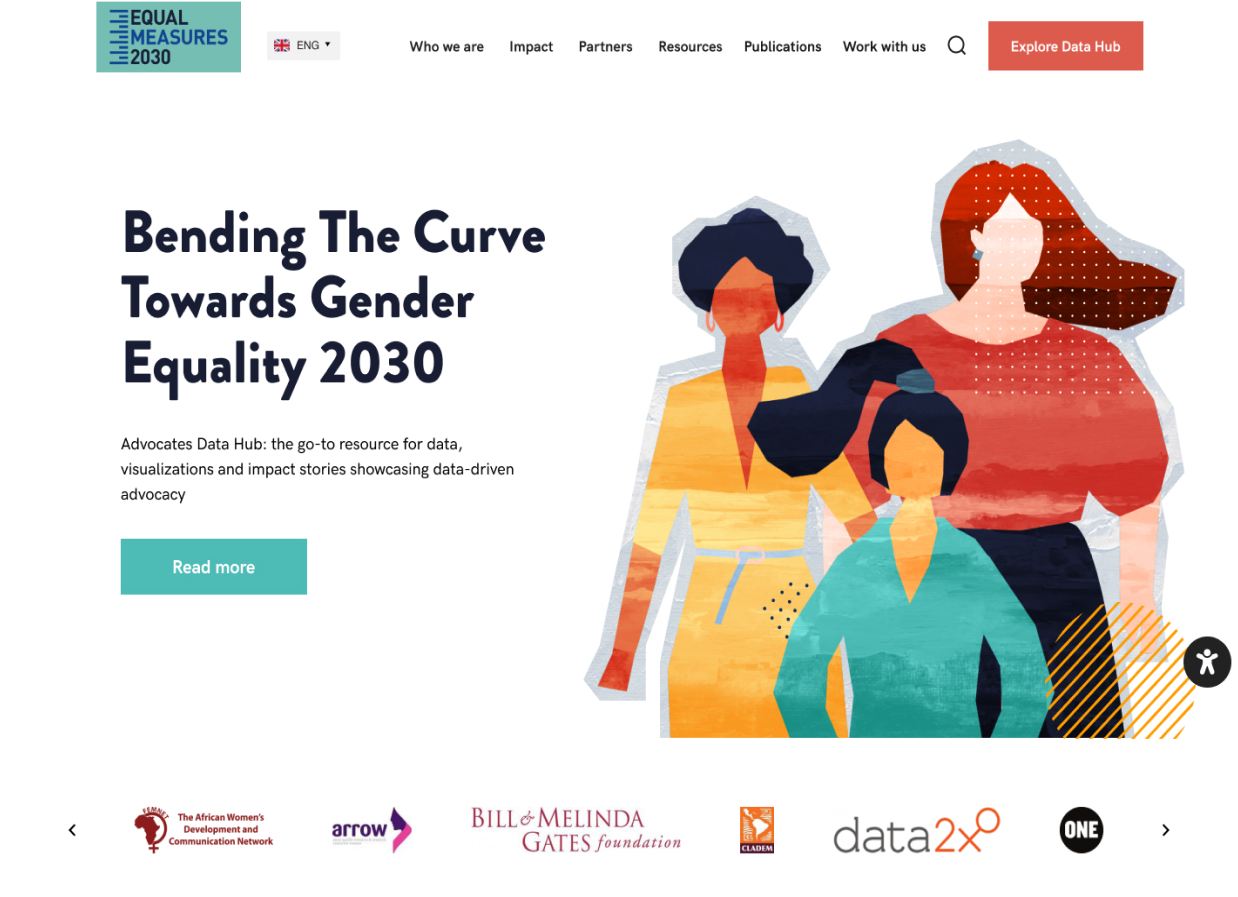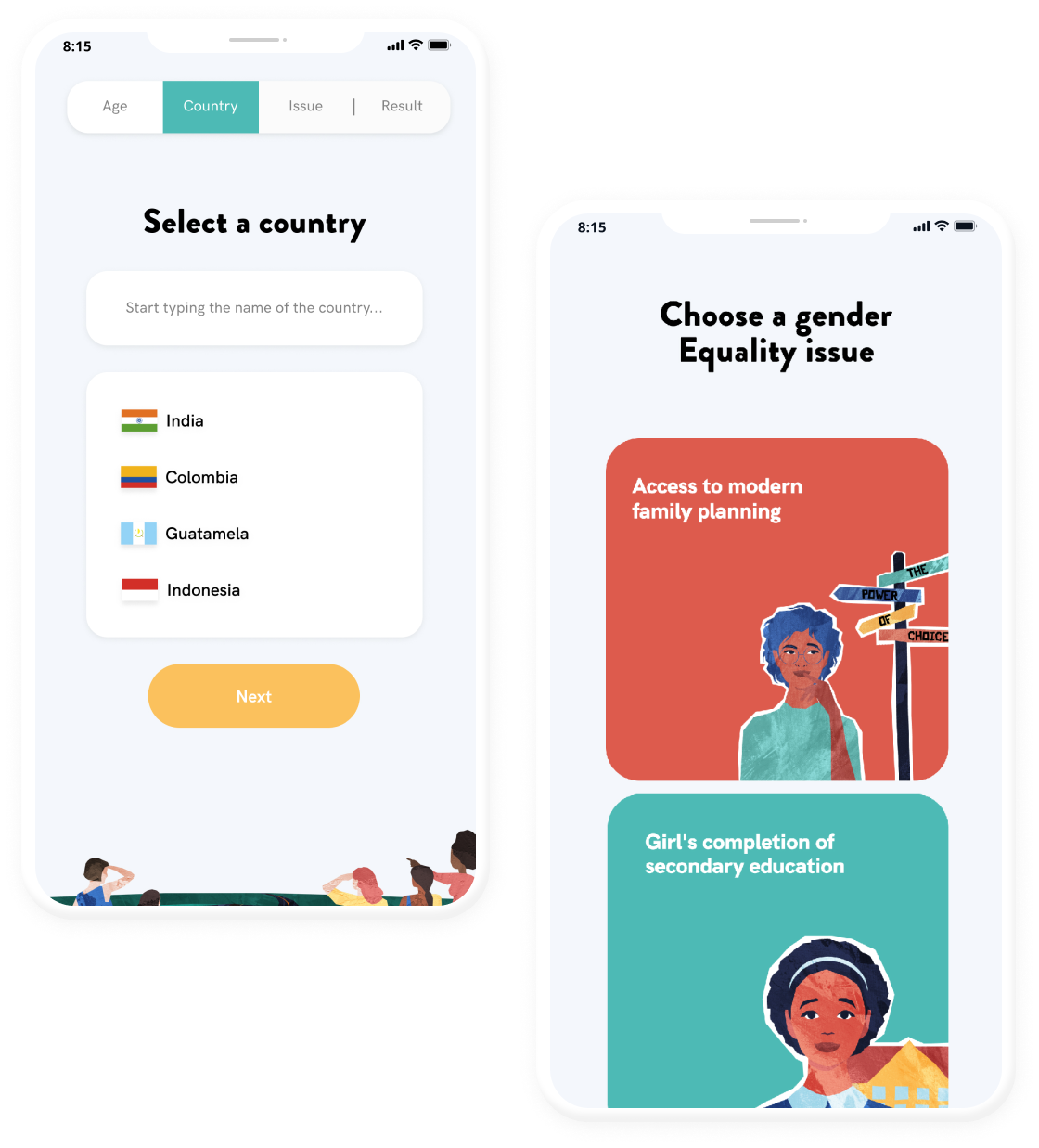Equal Measures 2030
User Experience (UX)
Interface Design (UI)
Web Development
CMS Integration
Projecting data and evidence through an informative platform
EM2030 is a joint initiative of national, regional, and global leaders from feminist networks, civil society, international development, and the private sector. We developed a user-focused website that helped policy makers, partners and feminists to find gender equality data on countries in line with the Sustainable Development Goals (SDGs).

User Interface Design
We began by setting a design direction for the website. Using customer feedback and EM2030 brand guidelines, we were able to create moodboards, and a set of visual references for the website. One of the goals of the project was to merge two existing websites into one. Comparing content, rearranging pages and separating overpopulated tabs.
We developed a Sitemap with the new layout and navigation structure, then sketched out wireframes to conceptualise how content would be displayed before moving on to the user interface design.

WordPress Development
The development of the EM2030 website was divided into two parts; the frontend and the backend. Although the previous websites were created on WordPress, on this occasion the frontend was constructed with TailwindCSS framework, and the backend (Admin panel) was made with WordPress. This facilitated the transfer of content from the formerly existing websites to the new one.

Data Tool
To coincide with the launch of the Bending the Curve report at the Generation Equality Forum – an event organised by UN Women, we developed an online tool that builds connections between individuals and EM2030’s data by calculating how old they would be when gender equality will be achieved, and how long it would be, before such individual would experience specific equal opportunities in the Bending the Curve report. This brought the entire experience to life.
The data used to power the tool was originally stored in numerous excel documents. So our team built a single page application using React JS, Node.Js, and PostgresQL that could read the documents and extract the relevant data easily.
